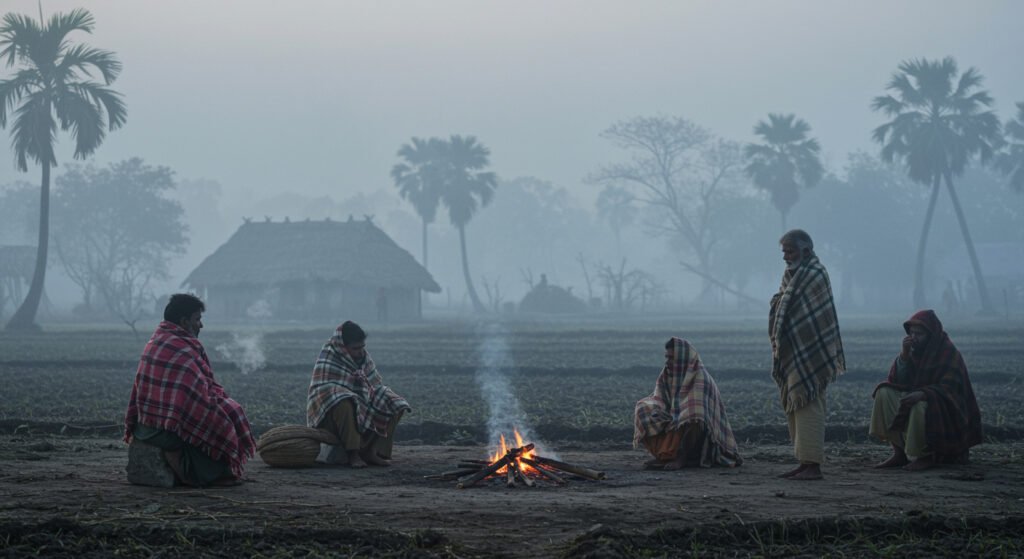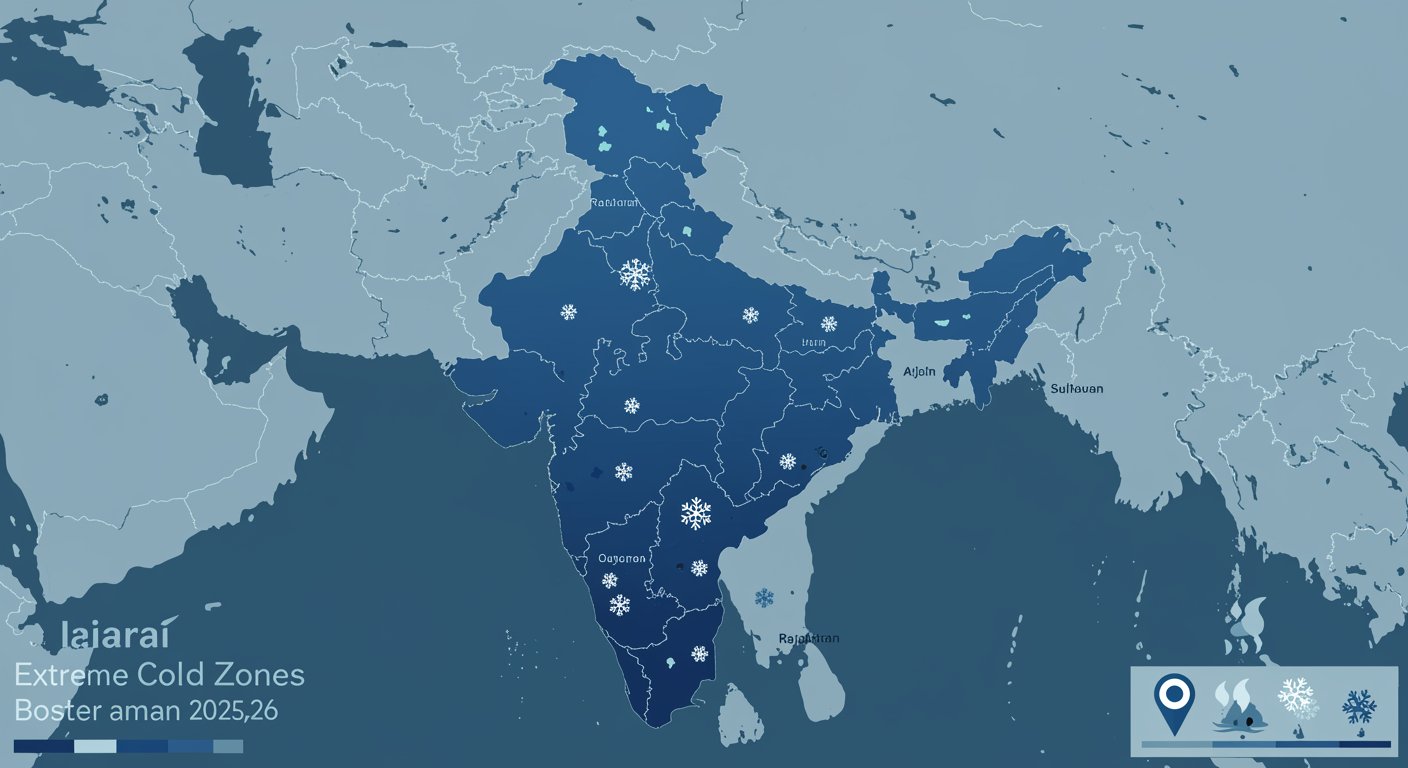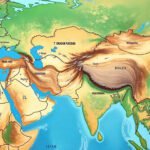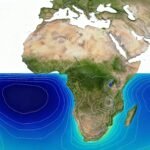India’s 2025–26 Winter Forecast — What to Expect, What to Prepare
Introduction
As the monsoon fades and the skies grow clear, India may be entering one of its most severe winters in recent memory. Climate forecasters—backed by recent trends and models—are warning of a strong La Niña event taking hold between October and December 2025, bringing with it unusually cold temperatures, heavy snowfall, erratic weather, and serious challenges across northern India. With reports already indicating a 71% probability of La Niña forming in that period, the signals are loud and clear: it’s time to prepare. The Times of India+3The Economic Times+3The Daily Jagran+3
Below is a detailed look at the science, regional risks, and practical strategies for coping with a potentially punishing winter.

What Is La Niña — And Why It Matters for India
- Definition & Mechanism
La Niña is a climate pattern in which the sea surface temperatures in the central and eastern Pacific Ocean become cooler than average, altering global atmospheric circulations. It is part of the broader ENSO (El Niño–Southern Oscillation) spectrum. Outlook India+2Deccan Herald+2 - India’s Typical Response
In Indian meteorological terms, La Niña has historically correlated with colder-than-normal winters in the north, stronger cold waves, and enhanced western disturbances that bring snow to the Himalayas. Sanskriti IAS+3Deccan Herald+3ceedindia.org+3 - Complex Interactions
It’s not always straightforward. La Niña’s influence can mix with climate change, local weather systems, and regional geography to create complex, sometimes unexpected outcomes. Thestudyias+2amoghavarshaiaskas.in+2
Key Forecasts & Projections for Winter 2025–26
| Forecast | Detail / Projection | Source / Note |
|---|---|---|
| Probability of La Niña | ~71% between October–December 2025; ~54% from December–February | Patna Press+4OB News+4The Economic Times+4 |
| Temperature Declines | Widespread below-normal minima in North & Northwest India | Zee Business+3The Times of India+3Moneycontrol+3 |
| Cold Wave Duration | 15–20 days average, versus usual 6–8 days | Zee Business |
| Unseasonal Rain / Post-Monsoon Rains | Southern Peninsular regions may see stronger northeast monsoon rains | Tehelka+1 |
| Himalayan Snowfall | Expect heavier snowfall, glacial accumulation & avalanche risk | The Daily Jagran+2Deccan Herald+2 |
Regional Risks & Impacts
North & Northwest India
- Sharp temperature drops may lead to severe cold waves, frost, and extended nights of sub-zero temperatures. The Times of India+2The Daily Jagran+2
- Increased demand for heating will press power grids, especially in states like Punjab, Haryana, Rajasthan, and Uttar Pradesh.
- Air quality degradation: Cold inversion layers can trap pollutants near the surface. La Niña may heighten this tendency. Thestudyias
Himalayan & Hill Regions
- Heavy snowfall & avalanche risk: Road closures, supply line disruptions, and threats to Himalayan communities. The Daily Jagran+1
- Glacial dynamics: Extra snow adds weight, raising concerns about glacial outburst floods (GLOFs) and slope stability.
Central & Southern India

- Erratic rainfall: Enhanced post-monsoon rains possible in peninsular zones, especially Tamil Nadu, Kerala, parts of Andhra Pradesh. Tehelka
- Milder cold stress: While extremes will focus in the north, even central zones may face unseasonal cold spells that stress vulnerable populations.
Agriculture & Water Systems
- Crops sown in the Rabi season (wheat, mustard) may suffer frost damage or altered growing conditions.
- Groundwater recharge patterns could shift due to uneven snowfall and rain distribution.
What Governments, Agencies & Public Should Do
1. Advance Planning & Warnings
- Issue cold wave advisories early, with real-time updates and region-specific forecasts.
- Prepare emergency shelters, especially in zones with poor insulation and high poverty.
- Coordinate with electric utilities, railways, road agencies for load management, de-icing, and contingency plans.
2. Healthcare & Public Safety
- Stock essential medicines, blankets, heaters, and respiratory support equipment.
- Spread public advisories on cold exposure, frostbite, and vulnerable populations (elderly, infants).
- Monitor air pollution, especially in urban belts.
3. Agricultural Measures
- Encourage planting of cold-resistant crop varieties.
- Protect seedlings from frost using agro-fabrics, mulch, and wind breaks.
- Adjust irrigation scheduling anticipating shifts in precipitation.
4. Infrastructure & Resilience
- Insulate water pipes, fuel lines, and power grid substations.
- Maintain snow removal resources, avalanche watch systems, glacial lake monitoring.
- Ensure road connectivity in hill zones with prepositioned crews and supplies.











